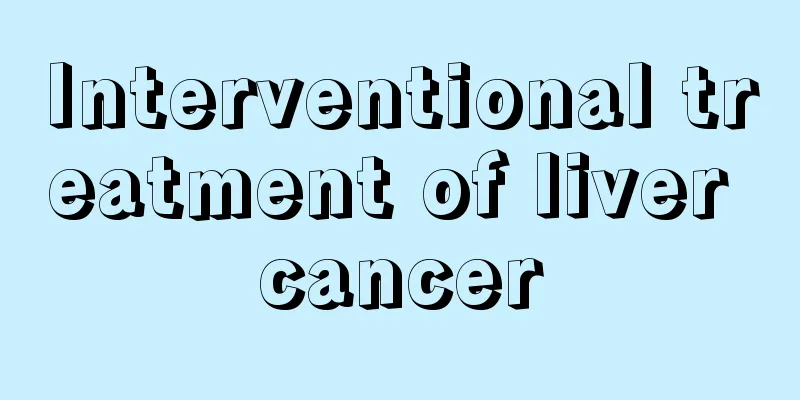What to do if hand, foot and mouth herpes breaks

|
Hand, foot and mouth herpes makes the fetus feel uncomfortable. In mild cases, the baby will feel distressed. In severe cases, the herpes will rot and the baby will suffer extremely. Wear loose clothing, exercise less and rest more, and drink more water to detoxify. Eating light food, not eating snacks, and drinking light foods such as egg custard and rice porridge are beneficial to recovery from the illness. If it's serious, you still need to go to the hospital to see a doctor. What to do if the blisters of hand, foot and mouth disease burst Children with hand, foot and mouth disease have varying degrees of herpes on their hands, feet and buttocks. The herpes is easily compressed and ruptured, leading to bacterial infection, which is also a way of spreading the virus. Therefore, keep the skin clean, wear loose and soft clothes, wear soft-soled shoes, walk less, cut nails frequently, and advise the child not to scratch the skin and blisters. For children with blisters on their skin, calamine lotion can be applied externally to relieve itching; for children with multiple herpes ulcers, they can be soaked or wet applied with 1/1000 potassium permanganate solution, and then apply calamine lotion after it dries. Rinse your mouth with saline before eating and give light liquid or semi-liquid food, such as milk, egg soup, porridge, etc. Eat less snacks and avoid cold, spicy and other irritating foods to avoid pain and food refusal. Children who refuse to eat should be encouraged to drink more water, or drink their favorite beverages. At the same time, they should replenish fluids to prevent dehydration. Let the child rinse his or her mouth with warm water regularly and drink plenty of water. For children with oral ulcers, apply montmorillonite powder or watermelon frost spray externally. Children with severe oral ulcers can use 2% hydrogen peroxide to clean the mouth. What are the symptoms of hand, foot and mouth disease? 1. Common case manifestations Acute onset, fever, mouth pain, anorexia, scattered blisters or ulcers on the oral mucosa, mostly located on the tongue, buccal mucosa and hard forehead, and may also affect the soft palate, gums, tonsils and pharynx. Maculopapular rashes appear on the hands, feet, buttocks, arms, and legs, and later turn into herpes. There may be inflammatory red halos around the herpes, and there is less fluid in the blisters. There are more of them on the hands and feet, and on the back of the palms. The number of rashes ranges from a few to dozens. It fades away without leaving any traces or pigmentation. Some cases only present as rash or herpangina. Most patients recover within a week and the prognosis is good. In some cases, the rash may be atypical, such as appearing in a single area or only as maculopapular rash. 2. Symptoms of severe cases In a few cases (especially those under 3 years old), the disease progresses rapidly, with meningitis, encephalitis (brainstem encephalitis is the most dangerous), encephalomyelitis, pulmonary edema, circulatory disorders, etc. occurring within 1 to 5 days of onset. In very rare cases, the condition is critical and can lead to death, and survivors may have sequelae. (1) Neurological manifestations when concurrent central nervous system diseases occur include: poor spirits, drowsiness, irritability, headache, vomiting, delirium and even coma. Limb tremors, myoclonus, nystagmus, ataxia, and ocular movement disorders. Asthenia or acute flaccid paralysis, convulsions. Physical examination revealed signs of meningeal irritation, weakened or absent tendon reflexes, and a positive Babinski sign. Central nervous system symptoms are more common in children under 2 years old. (2) Respiratory system manifestations of pulmonary edema: shallow breathing, difficulty breathing or change in rhythm, cyanosis of the lips, cough, coughing up white, pink or bloody foamy sputum; moist rales or sputum sounds can be heard in the lungs. (3) Circulatory system manifestations of concurrent myocarditis: pale complexion, skin patterns, cold limbs, cyanosis of fingers (toes), cold sweats, and prolonged capillary refill time. The heart rate increases or decreases, the pulse becomes shallow or weak or even disappears; the blood pressure increases or decreases. |
<<: What's wrong with fever in hands and feet
Recommend
Will the hyperplasia of double eyelids disappear
After double eyelid surgery, many people worry ab...
Why are my fingers swollen, painful and numb?
Fingers are also part of the human body. Clinical...
Prostate tumor indicators
Prostate tumor index is not the disease grade or ...
Will nosebleeds occur in late stage brain cancer?
A small number of intracranial tumors can cause n...
Is there any medicine available for late stage bile duct cancer
There are many methods for treating bile duct can...
How to wash chocolate off white clothes?
The reason why white clothes are very popular is ...
What is the final product of protein hydrolysis
The final products of protein hydrolysis are gene...
How to eat purple mango
Purple mango is also one of the many types of man...
Can athlete's foot be transmitted to babies?
As we all know, athlete's foot is contagious....
Is lymphoma contagious during reproduction?
Many people know that lymphoma is also a malignan...
The influence of chemical substances can easily lead to the occurrence of skin cancer
In our lives, the occurrence of various diseases ...
What are the manifestations of poor psychological quality
There are many manifestations of poor psychologic...
What are the surgical methods for gastric cancer
Gastric cancer surgery mainly includes open surge...
What should I do if my fingers itch and peel?
With the arrival of spring and summer, many peopl...
Can patients with fibroids exercise?
Whether fibroma patients can exercise has always ...









